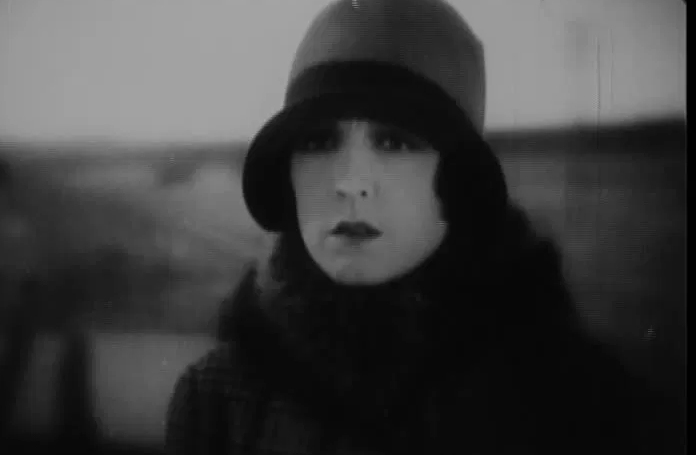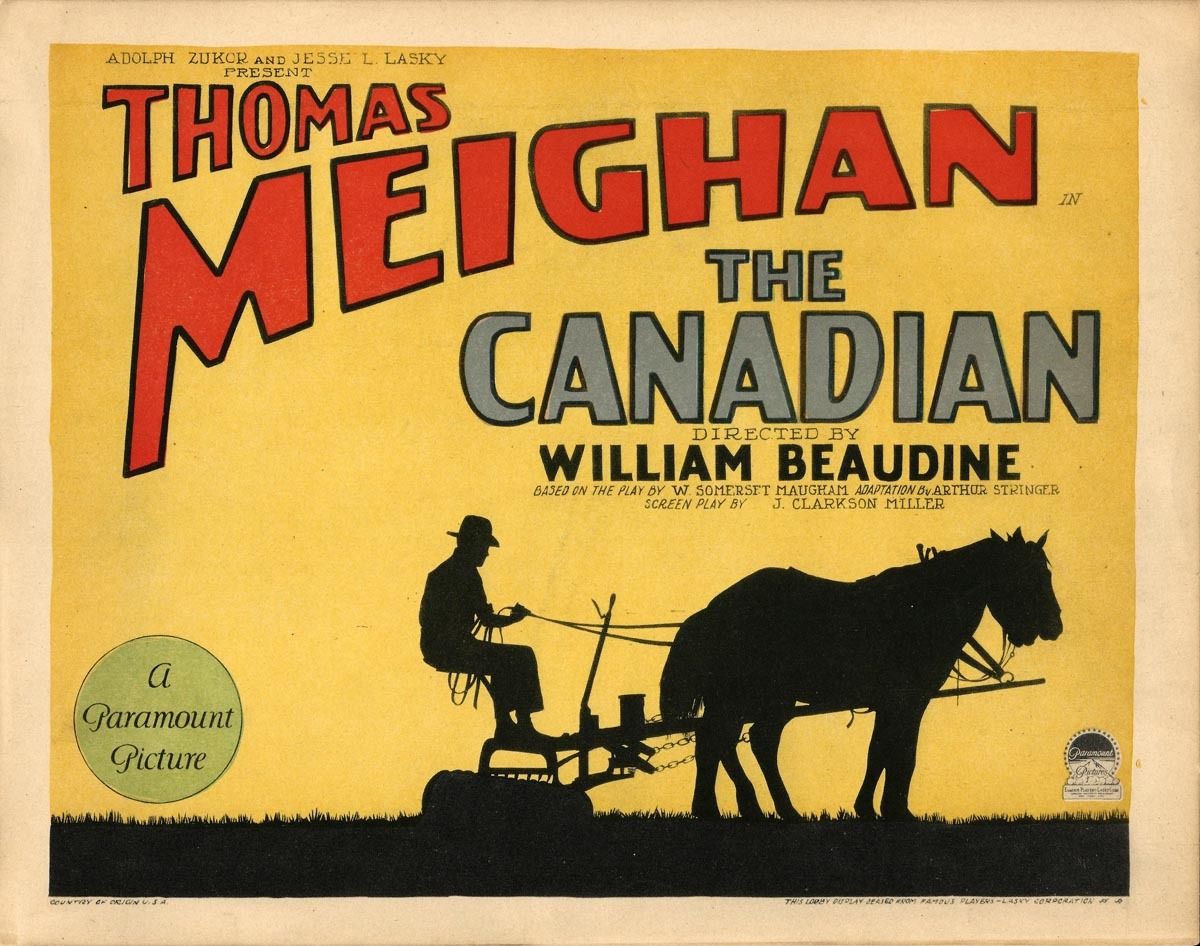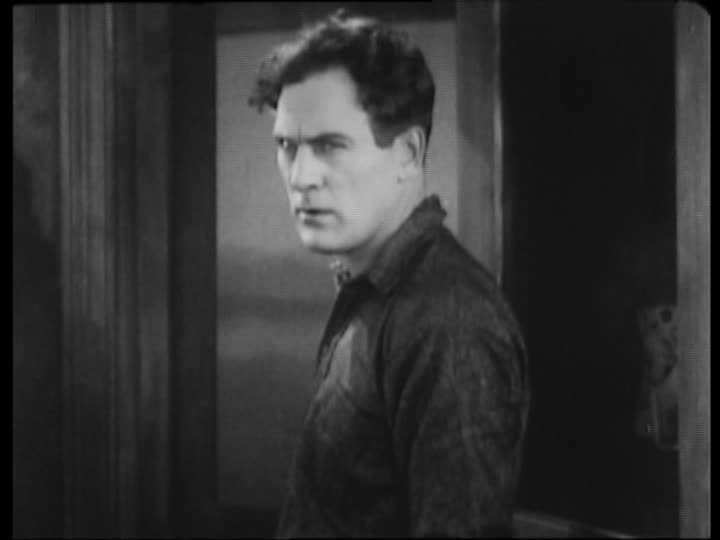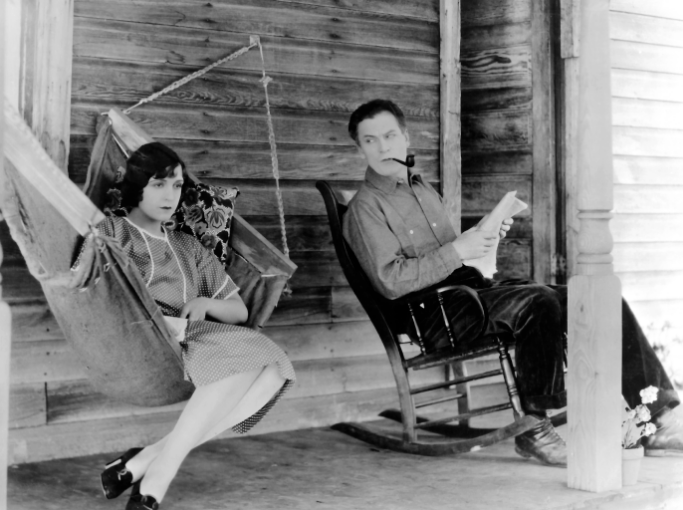

The Western – movies about the American frontier – are often considered Classic Hollywood’s oldest and most important ‘national myth,’ a genre used to define who we are as a people or a nation. There is some truth to this idea, but not every story told in America is the story of a frontier. In the eddies and backwaters of national myth-making, other story forms exist, for example those that represent the importance of family and community. In the world of cinema, one of these kind of stories is the ‘farm film’ – a genre which if not hugely popular, has continued to appear sporadically over the years.
The ‘farm film’ typically takes place in an isolated and remote agricultural part of the country, where the combination of marginal crops and bad luck have reduced the inhabitants to a near-poverty level, and even threaten loss of the farm itself.
With this dramatic setup, one of the farmers in this community will suddenly find himself living in the same house with a woman he barely knows. Sometimes this is the result of him advertising for a mail-order bride; at other situations a woman is forced by circumstances to accept his offer for marriage.
Any early hopes that the arrangement will work out happily are dashed by the uncouth nature of the husband, or the miserable conditions imposed by the location of the farm. As the tension builds between the man and woman, an actual or threatened sexual assault often occurs, driving the couple even farther apart.
Just as the couple is in the process of breaking up, a crisis (such as the crop being threatened by bad weather) forces them to work together, making them reevaluate their feelings for each other. Examples of this story include F.W. Murnau’s underappreciated City Girl (1930), The Purchase Price (starring Barbara Stanwyck), and more recently, Heartland (with Rip Torn). But there are two farm films from the silent era with remarkably similar storylines: The Canadian (1926) and The Wind (1928).
When a film has a title of The Canadian, one might raise a hand and ask how a film with that name could be used as an example of a national myth? Okay, maybe you’ve got me on a technicality, but I would answer that the genre of farm films inhabit the psyche of both Canada and the United States. There ARE films that deal just with the myth of Canadian nation-building, such as Powell & Pressburger’s The 49th Parallel. But for now, let’s just consider the ‘farm film’ as a ‘North American’ myth, and move on…
The Canadian, directed by William Beaudine, starts with a city girl, Nora Marsh (Mona Palma), who has been living in London, but is forced by financial reasons to move in with her brother, a married Alberta farmer. Raised with a silver spoon in her mouth, Nora has a hard time adjusting to her brother’s crowded house, and after an argument with her sister-in-law, accepts a marriage proposal from a nearby farmer, Frank Taylor (Thomas Meighan). Soon, both Nora and Frank see how mismatched she is in the role of a farmer’s wife, and the couple start to fight.
At this point, the film closely follows the plot of a more famous film, The Wind (1928), directed by Victor Sjöström and starring Lillian Gish. Both films basically match the same beats: a rejection of the husband, an (attempted) rape, a crisis where the couple must work together, and a final resolution in which the wife must choose to leave the farm or stay married.
I went with my friends to screenings of both films on consecutive nights, and the plot lines of the films were so identical that afterward the obvious joke had to made-
“The Canadian is The Wind…without the wind.”
But jokes aside, which is the better film?
As great as The Wind is, and I think it easily qualifies as one of ‘the essentials,’ it is still very much a one-note film. The wind starts to blow in the very first scene, as Letty (Lillian Gish) is riding on the train…and stays with us almost the entire film. While this is done on purpose as it insures our discomfort along with Letty’s, it does introduce a certain monotony, and after you make the obvious connection that the wind represents a force of nature reacting against Letty’s severely repressed character, there is not much more to consider as the story unfolds. Also, since the characters tend toward types rather than real people, there is a certain abstraction to the affair.

On the other hand, The Canadian is full of nuance and variety, and superbly acted. Veteran lead Thomas Meighan, playing taciturn farmer Frank Taylor, is understated but very convincing – we can see his emotions bubbling up inside as he tries to deal with a situation completely outside his experience. Mona Palma was only in a few films, but she more than holds her own as Nora, a snob from the East forced to completely reevaluate her ideas about what she wants out of life. The rest of the cast are equally good. This is a terrific cast, directed expertly by William Beaudine. Beaudine’s reputation would suffer decades later after pundits snarked about films he made late in his life, conveniently forgetting that this director had one of the longest careers of anyone in Hollywood.

The opening scenes – where Nora is unceremoniously dumped at a train station and taken to a farm – are especially well handled. One can feel for Nora, who has been plunked down in a house where manners and politeness are a foreign language, but at the same time we also empathize with the farm hands who see before them a woman who is haughty and high-handed, and worse, completely ignorant in the simplest household duties. It makes the story far more interesting, because no one is presented as a ‘straw man’ – everyone is right from their point of view.
And now I’m going to get off the fence and ask: Which of the two films is better? The Wind is certainly the obvious showpiece, a film that can be screened as a big event, with an orchestra given full license to go with a nonstop gale force tempo.
But full of surprises and having complex ‘real’ characters, The Canadian is in many ways the more interesting film — and hopefully with its increased visibility, it will become more accessible to the general public.



One thought on ““Thar She Blows!” The Canadian vs. The Wind”
You’ve inspired me to revisit The Canadian. It was highly recommended to me after it played at Cinecon. When it screened in SF, it left me cold. Happily, I have a dvd waiting for me. I will give it another go and let you know.